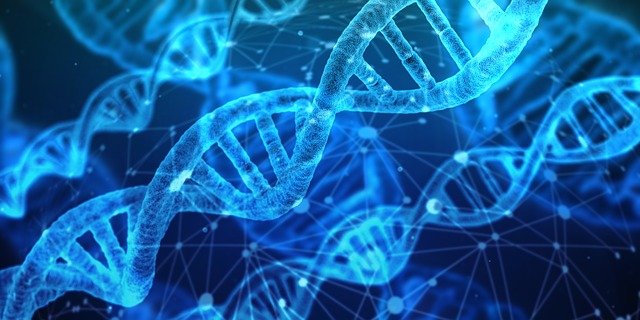
Helix-Somal Technology Science
What are Liposomes?
Liposomes first discovered by British hematologist Alec Bangham in 1961 (and first published in 1964), who was studying phospholipids and blood clotting. liposomes are delivery vehicles for transporting substances into the body effectively via facilitating absorption directly in the mouth or by preventing breakdown by stomach acid. Since the 1970s, liposomes have been investigated as potential drug delivery systems because of their biocompatibility and ability to incorporate both hydrophilic and hydrophobic therapeutic agents. In the recent years the Nutraceutical industries start adapting this technique for dietary supplements that are poorly absorbed by the human body.
Liposomes, more broadly, are one part of a family of lipid-based deliveries, the most common of which is a simple emulsion such as that found in foods such as mayonnaise, where oil and water are brought together in a time-limited stability. Emulsions use surfactants (molecules with dual natures that can interact with both water and oil), such as lecithin, to stabilize drops of oil in water (and oil-in water or O/W emulsion) or droplets of water in oil (a water in-oil or W/O emulsion). Though basic emulsions have been understood for hundreds of years, when synthetic surfactants, such as polyethylene glycols (PEGs) entered into use, the creation of emulsions grew in sophistication and breadth of application, including into drug delivery. Incorporation of high-shear processing methods, such as sonication and homogenization, to break down particle size, along with more refined chemistry, allowed the size of dispersed droplets to fall in the 10- to 200-nm range.
Liposomes are not emulsions, the lipid layers are made up mainly of phospholipids (lecithin), which are amphiphilic; meaning they have a hydrophilic head and lipophilic tail. the phospholipids arranged into spherical cell membrane–like lipid bilayers with their water-loving “heads” toward the aqueous medium and their fatty “tails” tucked toward each other. These structures created pockets of entrapped water along with water soluble compounds and the potential to protect them from hostile digestive conditions and potentially facilitating gastrointestinal (GI) uptake (see Figure 1).
Figure 1
Figure 2
The size of liposomes is very important, classification of liposomes was most often based on size and number of layers of the phospholipids. Multilamellar (multilayers) vesicles (MLV) were several hundred nm (generally 100-400 nm) in diameter and consisted of several concentric lipid bilayers with aqueous interlayers figure 2. Large Unilamellar liposomes figure 1 were larger, single-layer vesicles (>100 nm), and small unilamellar vesicles were single layer vesicles (≤100 nm)
Helix Health Sciences utilizes phospholipids isolated from lecithin produced from sunflower seed oil. Purified lecithin fractions are graded by the percentage of phosphatidyl choline (PC) they contain. Raw lecithins contain approximately 15% PC and higher grades of lecithin fractions contain 50% to 95% PC. PC has a rich history of use as a therapeutic and is considered the most beneficial of the phospholipids and is the most versatile for liposome formation. Soy phospholipids have the longest history of use and there are some excellent very-high PC sources of soy lecithin. Unfortunately, due to the soy allergy the usage of soy lecithin is on the decline.
Though phospholipids are almost a defining presence in the liposome bilayer membrane, other ingredients are introduced by HHS to create more stable, absorbable, or long-lived structures. The most common of these are food-grade Vitamin E, oils such as medium-chain triglycerides (MCTs), and membrane stiffeners such as Vitamin D3 and vegetable stearic acid instead of cholesterol.
Small liposomes may be drastically more efficient at intracellular delivery of nutritional compounds. In a recent study, with carefully-sized liposomes, cellular uptake increased 9-fold as liposome size was decreased from 236 nm to 97 nm and was 34-fold higher at 64 nm(1).
As a result of these studies, HHS introduced the natural vitamin E succinate (TPGS) to create the stealth liposomes. (TPGS) has emerged as a valuable, safe tool, for incorporation into liposome membranes.
HHS used High shear equipment, optimum amount lecithin loads and stabilizing agents to produce small diameter particles size (50-100 nm). The results of refined chemistry and high shear equipment such as cell disruptor (ultra-sound) and rotor-stator high speed dispersion devices allowed small liposomes to be born.
Advantages of Liposomal Delivery
High bioavailability and absorption compared with other oral forms of supplements.
Noninvasive; avoids pain and discomfort associated with injections and decreases the contamination risk.
Micronized encapsulation protects against the harsh environment of the GI tract and increases transmucosal (oral) uptake and absorption.
Increased intracellular delivery.
Can hold both hydrophilic and hydrophobic compounds.
Ideal for those for whom swallowing a tablet is not possible.
Allow for adjustable and incremental dosing for children and adults.
Cost effective by being able to take a lower dose for the same effect.



